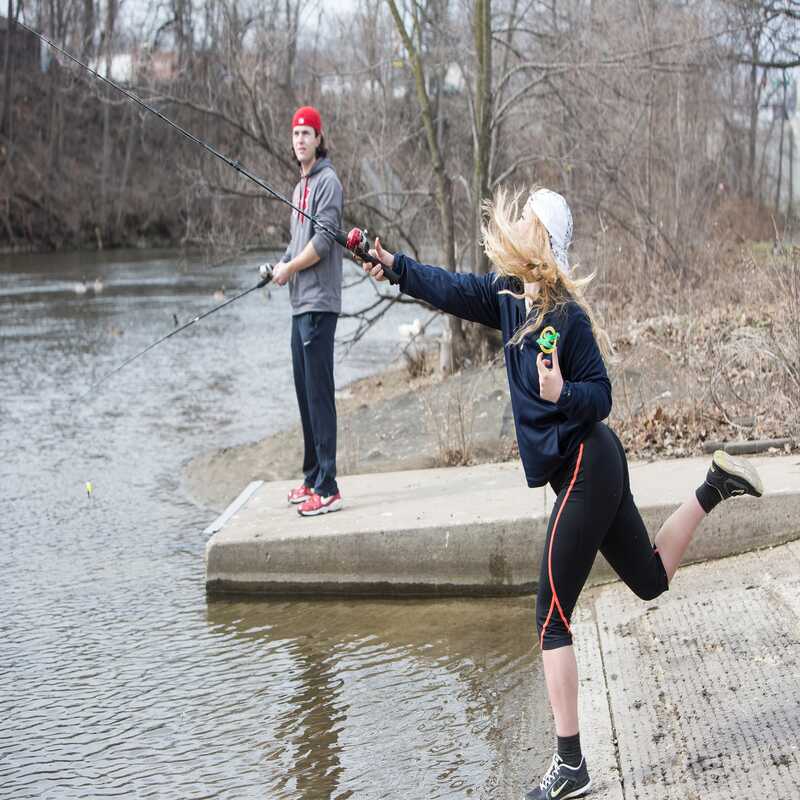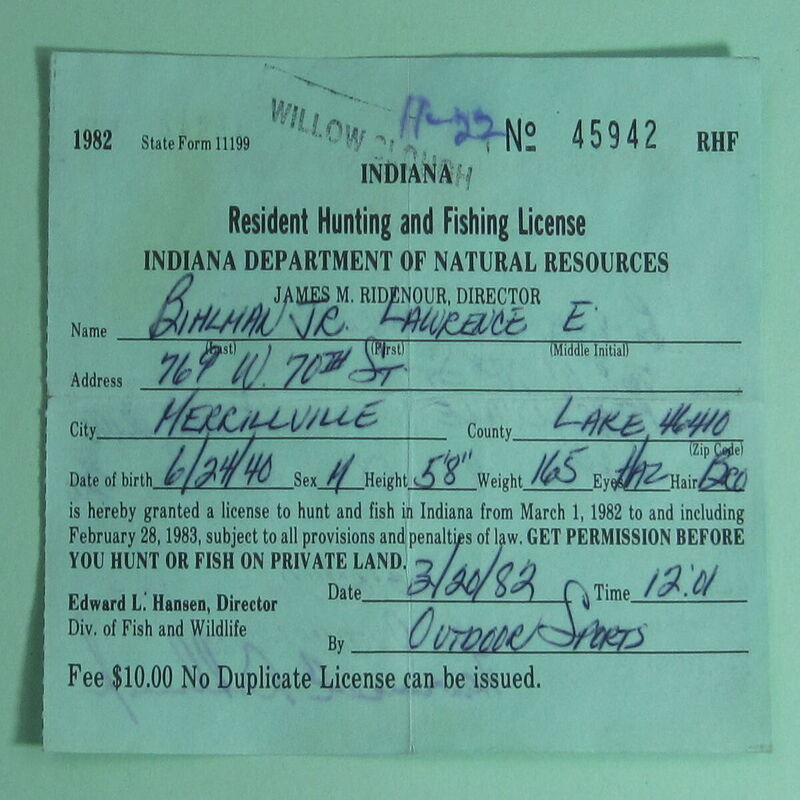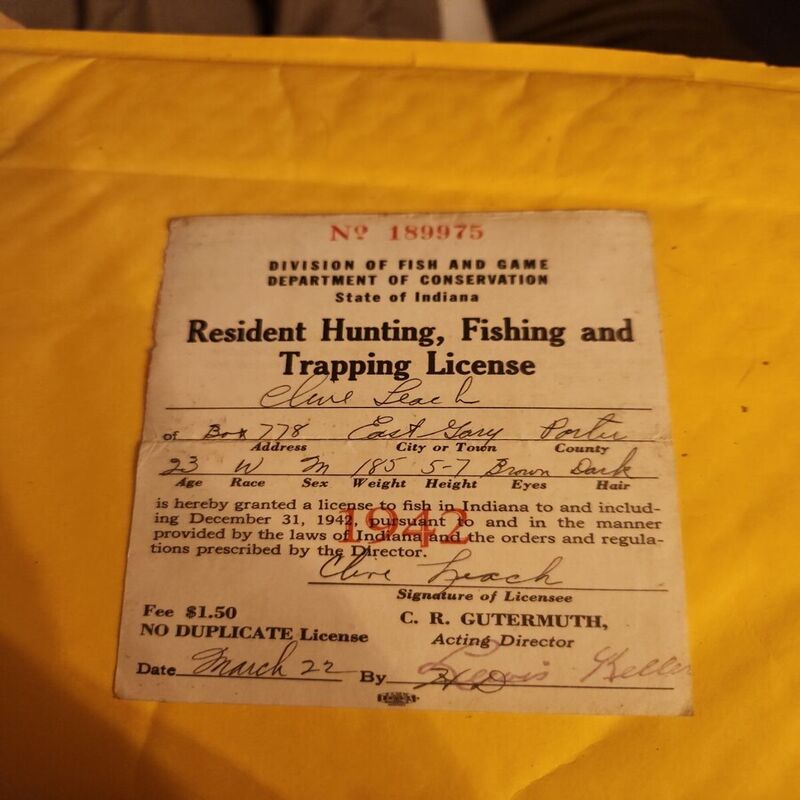Introduction to Indiana Fishing License
For any angler looking to reel in the big catch in the Hoosier State, understanding how much a fishing license in Indiana costs is critical. Before you prepare your tackle and bait, the law requires you to hold a valid fishing license. This legal prerequisite helps with fishery conservation efforts and supports the state’s natural wildlife habitats. Indiana offers different types of fishing licenses tailored to residents, non-residents, seniors, and those looking for short-term options.
Whether you’re a seasoned fisherman, or you’re just dipping your toes into the water, securing a license is your first step to enjoying Indiana’s plentiful fishing opportunities. The process is straightforward and can be completed online, in-person, or via mail, ensuring you have the proper permissions before casting your line.
The fees from fishing licenses play a crucial role in backing important fish and wildlife management initiatives. From maintaining the pristine conditions of local habitats to funding research and educational programs, your license fees are an investment in the natural beauty and sustainability of Indiana’s outdoors. In this blog, we’ll guide you through everything you need to know about Indiana fishing licenses, providing clarity on the costs, types, and the purchasing process to help make your fishing trip both lawful and fruitful.

Types of Indiana Fishing Licenses
Choosing the right fishing license in Indiana hinges on several factors such as residency, age, and the length of time you plan to fish. Different licenses cater to various needs, ensuring all anglers meet state regulations while enjoying their fishing experience. Let’s break down the types of fishing licenses available in Indiana.
Indiana Resident Fishing Licenses
For Indiana locals, several options are available:
- Annual Fishing License: This license allows unlimited fishing for the year.
- One-Day Fishing License: Perfect for short trips or trying out fishing.
- Annual Senior Fishing License: A discounted option for seniors aged 65 and older.
- Senior Fishing License (Lifetime): A one-time purchase for lifelong fishing rights.
- Voluntary Senior Fishing License (Annual): An optional, annual discounted license for seniors.
- Trout or Salmon Stamp: An additional stamp required for fishing trout or salmon, to be purchased along with an annual or one-day license.
Indiana Non-Resident Fishing Licenses
Visitors to the Hoosier State are not left out. Non-residents can choose from:
- Annual Fishing License: A full year of fishing access in Indiana.
- One-Day Fishing License: Ideal for tourists or short-term visitors.
- Seven-Day Fishing License: An excellent choice for vacations or weeklong fishing trips.
- Trout or Salmon Stamp: Like residents, non-residents must also obtain a stamp for trout or salmon fishing.
Each license type has a specific cost associated with it, ensuring anglers pay for the access they need. In the following sections, we’ll explore the cost breakdown of these licenses to determine how much is a fishing license in Indiana for residents and non-residents alike.

Cost Analysis of Indiana Fishing Licenses
Knowing how much a fishing license in Indiana costs is important for avid anglers and occasional fishermen alike. Here’s a breakdown to help you understand the fees associated with various fishing license options in the state.
Resident Fishing License Costs
- Annual Fishing License: $23 for year-round fishing thrills.
- One-Day Fishing License: A budget-friendly $10 for a day’s adventure.
- Annual Senior Fishing License: Only $3 for those 65+ enjoying retirement by the water.
- Senior Fishing License (Lifetime): A worthwhile $23 for a lifetime of memorable catches.
- Voluntary Senior Fishing License (Annual): An optional $3 for seniors supporting fisheries.
- Trout or Salmon Stamp: An essential $11 for trout or salmon enthusiasts.
Non-Resident Fishing License Costs
- Annual Fishing License: $60 for out-of-state fans of Indiana waters.
- One-Day Fishing License: Set aside $15 for a quick fishing trip.
- Seven-Day Fishing License: Spend $35 for a week of unbridled fishing joy.
- Trout or Salmon Stamp: Like residents, non-residents pay $11 for targeted fishing.
Senior and Voluntary License Options
The state offers discounted rates and lifetime licenses for seniors. It also provides a way for senior anglers to voluntarily contribute to conservation efforts with an annual $3 license.
Add-on Stamps for Trout and Salmon
Trout or salmon fishing requires an additional $11 stamp. This is mandatory for both residents and non-residents and is valid for a year.
Fees from licenses contribute to preserving Indiana’s fishing habitats and conserving fish populations. These costs support research, habitat restoration, and educational programs, ensuring the future of fishing in the state. Remember, when planning your next fishing trip, licensing fees are more than just a legal necessity; they’re an investment in the sustainability and enjoyment of Indiana’s aquatic resources.
Age Requirements and Exemptions
To fish legally in Indiana, knowing the age requirements is crucial. Let’s examine what the state mandates.
Under 18 Exemptions
- If you’re under 18 and a resident of Indiana, you’re in luck. You don’t need a fishing license.
- Non-residents younger than 17 are also off the hook. They can fish without a permit.
Senior Citizen Considerations
- Indiana seniors born before April 1, 1943, enjoy a special benefit. They’re exempt from needing a fishing license.
- When fishing, they should carry an ID. An Indiana Driving License or a proof of age and residency will work.
This system simplifies regulations for a smooth fishing experience. It’s designed to encourage young individuals to fish, instilling a love for the sport. And it honors seniors with easy access to Indiana’s waters. If you fall into these groups, you’re all set. For others, obtaining a license is the next step for a legal fishing adventure in Indiana.
Where and How to Purchase an Indiana Fishing License
Getting your fishing license in Indiana is straightforward. You have three main ways to buy one: online, in person, or by mail. Here’s a quick guide on each method to help you grab your license with ease.
Online Purchase Options
Buying a license online is fast and simple. You can visit the Indiana Fish & Wildlife Online Licensing Portal. You will need ID and a credit card. This method is great as you can do it from anywhere, anytime.
In-Person Purchase Locations
Prefer to get your license in person? Visit an authorized retailer, county clerk, or DNR property. You can find a nearby location using their Interactive Map online. This is a good choice if you want to talk to someone directly.
Mail-in Application Process
Some may opt to buy their license via mail. Send your details and payment to the Indiana DNR address listed. Remember, this takes up to two weeks. Plan ahead to make sure you get your license in time for your trip.
Choose the method that works best for you. Each way is designed to be user-friendly. Investing in your license means investing in Indiana’s fishing future. When you have your license, you’re set for a great time on Indiana waters.

Funding Allocation of Fishing License Fees
When you ponder on how much is a fishing license in Indiana, you might also wonder, where does that money go? The funds accumulated from fishing license sales play a pivotal role in maintaining and enhancing Indiana’s fisheries and aquatic resources.
The proceeds from your fishing licenses are distributed to ensure the following:
- Research: They finance substantial research projects to study fish habits, populations, and ecosystem dynamics.
- Habitat Restoration: Licensing fees help in the restoration and preservation of natural fish habitats, ensuring species thrive.
- Area Maintenance: The fees are vital for maintaining Fish & Wildlife areas as well as public access sites for anglers.
- Private Land Assistance: Landowners receive expert guidance on managing their waterways to benefit fish and wildlife.
- Education Programs: License fees subsidize educational initiatives, training new generations of hunters and anglers.
- Enforcement and Protection: These funds allow law enforcement divisions to protect Indiana’s fish and wildlife by enforcing regulations.
The Division of Fish & Wildlife (DFW) and the Division of Law Enforcement (DLE) benefit directly from the sale of licenses and permits. This financial support is crucial to their missions of preserving Indiana’s fish and wildlife for current and future generations.
Investing in a fishing license isn’t just about legality; it’s a contribution to environmental stewardship and sustainability. By purchasing a license, you are actively supporting the health and prosperity of Indiana’s aquatic life and ensuring that the state’s fishing legacy continues for years to come.
Indiana Fishing Permit Fee Changes
Keeping Indiana’s fisheries healthy and accessible requires funds, and part of these come from fishing permit fees. However, costs for conservation and management keep rising. Thus, adjustments in permit fees are necessary to support various initiatives by the Indiana Natural Resources Commission. Let’s discuss the recent changes to the permit fees and their implications.
Updated Licensing Costs
Fishing enthusiasts should be aware that there have been some updates to the costs of fishing licenses in Indiana. While personal license fees had seen no change since 2006, commercial license and permit fees hadn’t shifted since the 1980s. To keep up with the increasing costs of habitat maintenance, research, and public education, new fee structures have been put in place.
The hike in fees will directly aid the Division of Fish & Wildlife (DFW) and the Division of Law Enforcement (DLE). Expect to contribute to a range of vital activities:
- Research into fish and wildlife populations.
- Habitat restoration for a variety of species.
- Upkeep of public access sites for better fishing experiences.
- Support for private landowners to manage their waterways.
- Educational programs for budding hunters and anglers.
- Protection services to ensure adherence to wildlife laws.
Fee Implementation Timeline
It’s important to highlight that these fee changes are not instantaneous but have a planned rollout. For commercial licenses, the new fees took effect starting with 2022 licenses, which became available in October 2021. For the general angling public, any license purchased from January 2022 onwards reflects the updated costs.
Understanding when and how these fees change is crucial for anglers. By staying informed, you can plan your fishing activities accordingly and ensure that you are in compliance with the state regulations.
Importance of License Fees
Money from license sales is split between the DFW and DLE. This funding is essential for managing fish and wildlife resources and the enforcement of related laws. Therefore, the cost adjustments to Indiana fishing licenses are not merely a financial matter; they are investments into the protection and enhancement of the Indiana fish and wildlife resources for present and future enjoyment.
In conclusion, the changes in permit fees are a necessary step to continue preserving Indiana’s natural treasures. As anglers, purchasing a license is more than getting permission to fish; it’s supporting a thriving ecosystem that benefits everyone. Stay current with the fee schedules to keep enjoying the fishing adventures Indiana has to offer.
